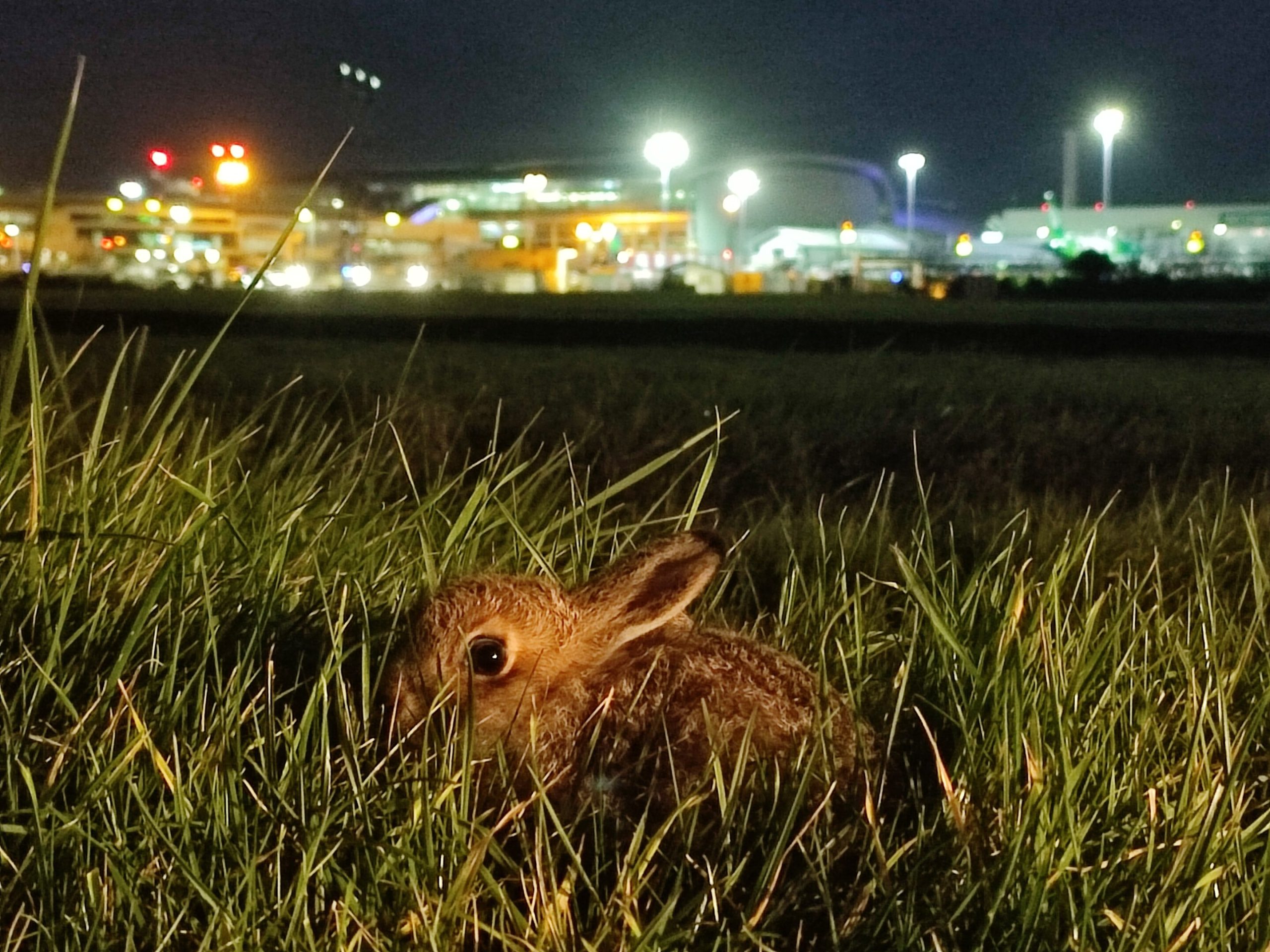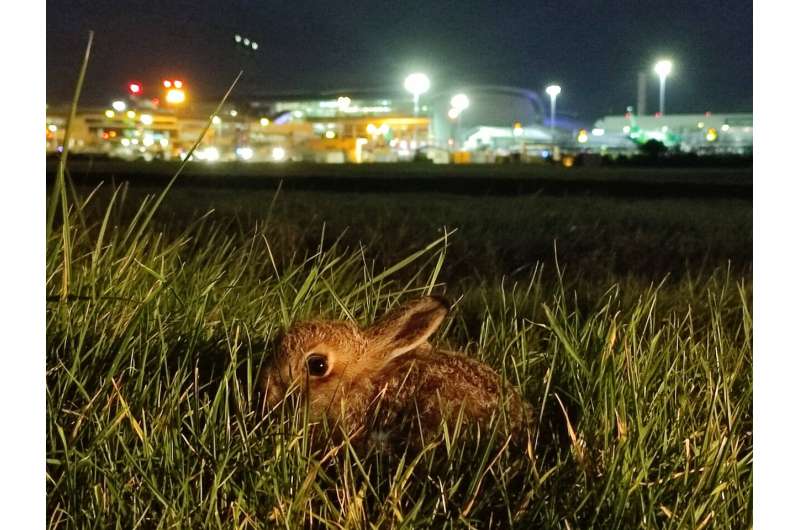

Researchers have identified the times of the day when hares are more likely to be struck by aircraft at Dublin airport—and believe their findings may help reduce costly “runway roadkill” incidences around the world.
A study led by Samantha Ball, an Irish Research Council Scholar at the School of Biological, Earth and Environmental Sciences (BEES) in University College Cork used motion-activated camera traps to collect activity data on the hare population inhabiting the airfield at Dublin Airport, and used the data to identify when hare strikes, or wildlife-aircraft collisions, were more likely to occur.
These new findings were published today in the journal Remote Sensing in Ecology and Conservation.
The new study follows a paper published last year in which a team lead by Ms Ball found the number of wildlife-aircraft collisions with mammals are increasing by up to 68% annually in some countries and has caused damage that has cost in excess of $103 million in the United States alone over a 30 year period.
“Firstly, we identified two distinct time periods of increased strike risk, generally around sunrise and in the hours approaching midnight,” Ms Ball explained.
“Of course, with varying daylength throughout the year in Ireland, there is some seasonal variation here. We also found that hare strike times at the airfield were closely associated with the times of day when hares were most active at the airfield but when aircraft movements were relatively low.
“This tells us that we can focus strike prevention efforts- such as scaring tactics and runway patrols- directly onto the hare population themselves as opposed to facing the near-impossible task of altering aircraft activity, in order to reduce hare strike events.
“This work has allowed us to identify periods throughout the day, and year, when strike risk with hares may be higher, indicating when strike prevention efforts can be increased to deter hares from the active runway. The research can also be applied to other airfields, as although we focus here on the Irish hare at Dublin Airport, this method can be used to identify periods of increased strike risk with ground-dwelling species of concern worldwide, such as deer and large carnivore species,” she said.
The paper “Hareport hazard: Identifying hare activity patterns and increased mammal-aircraft strike risk at an International Airport by Samantha Ball,” Anthony Caravaggi, and Fidelma Butler will be published by Remote Sensing in Ecology and Conservation.
More mammals are being struck by aircraft each year
Hareport hazard: Identifying hare activity patterns and increased mammal-aircraft strike risk at an International Airport, Remote Sensing in Ecology and Conservation (2022). DOI: 10.1002/rse2.2934
University College Cork
Citation:
Hareport hazard—researchers identify most dangerous times for hares on Dublin Airport’s runway (2022, August 10)
retrieved 10 August 2022
from https://phys.org/news/2022-08-hareport-hazardresearchers-dangerous-hares-dublin.html
This document is subject to copyright. Apart from any fair dealing for the purpose of private study or research, no
part may be reproduced without the written permission. The content is provided for information purposes only.